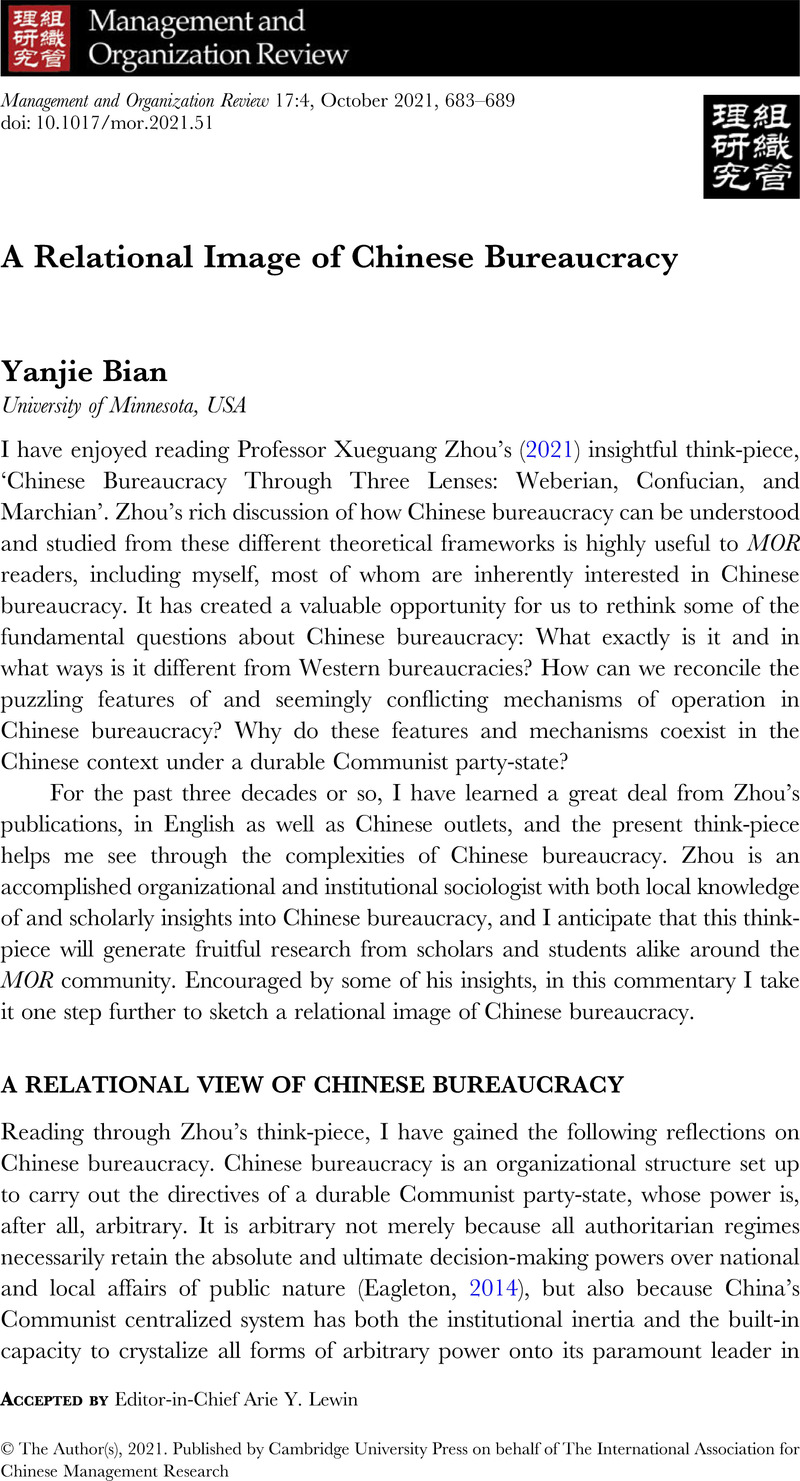No CrossRef data available.
Article contents
A Relational Image of Chinese Bureaucracy
Published online by Cambridge University Press: 06 August 2021
Abstract
An abstract is not available for this content so a preview has been provided. Please use the Get access link above for information on how to access this content.

- Type
- Article Commentary
- Information
- Management and Organization Review , Volume 17 , Special Issue 4: Remembering James G. March , October 2021 , pp. 683 - 689
- Copyright
- Copyright © The Author(s), 2021. Published by Cambridge University Press on behalf of The International Association for Chinese Management Research
Footnotes
Accepted by Editor-in-Chief Arie Y. Lewin
References
REFERENCES
Bian, Y. 2017. The comparative significance of guanxi. Management and Organization Review, 13(2): 261–267.CrossRefGoogle Scholar
Bolton, J. 2020. The room where it happened: A White House memoir. New York: Simon & Schuster.Google Scholar
Burt, R. S., & Burzynska, K. 2017. Chinese entrepreneurs, social networks, and guanxi. Management and Organization Review, 13(2): 221–260.CrossRefGoogle Scholar
Feng, J. 2010. Cadre in central county (中县干部, zhong xian gan bu). Doctoral thesis, Department of Sociology, Peking University. In Chinese.Google Scholar
McCue, K. 1996. Promotions and wage growth. Journal of Labor Economics, 14(2): 175–209.CrossRefGoogle Scholar
McPherson, M., Smith-Lovin, L., & Cook, J. M. 2001. Birds of a feather: Homophily in social networks. Annual Review of Sociology, 27(1): 415–444.CrossRefGoogle Scholar
Sautman, B. 1991. Politicization, hyper-politicization, and de-politicization of Chinese education. Comparative Education Review, 35(4): 669–689.CrossRefGoogle Scholar
Schurmann, F. 1973. Ideology and organization in Communist China. Berkeley, CA: University of California Press.Google Scholar
Vogel, I. 2013. Deng Xiaoping and the transformation of China. Cambridge, MA: Harvard University Press.Google Scholar
Walder, A. 1995. Career mobility and the Communist political order. American Sociological Review, 60: 309–328.CrossRefGoogle Scholar
Yang, D. 2017. China's developmental authoritarianism: Dynamics and pitfalls. Routledge handbook of democratization in East Asia: 122–141.CrossRefGoogle Scholar
Zhou, X. 2021. Chinese bureaucracy through three lenses: Weberian, Confucian, and Marchian. Management and Organization Review, 17(4): DOI: https://doi.org/10.1017/mor.2021.34CrossRefGoogle Scholar





Target article
Chinese Bureaucracy Through Three Lenses: Weberian, Confucian, and Marchian
Related commentaries (1)
A Relational Image of Chinese Bureaucracy